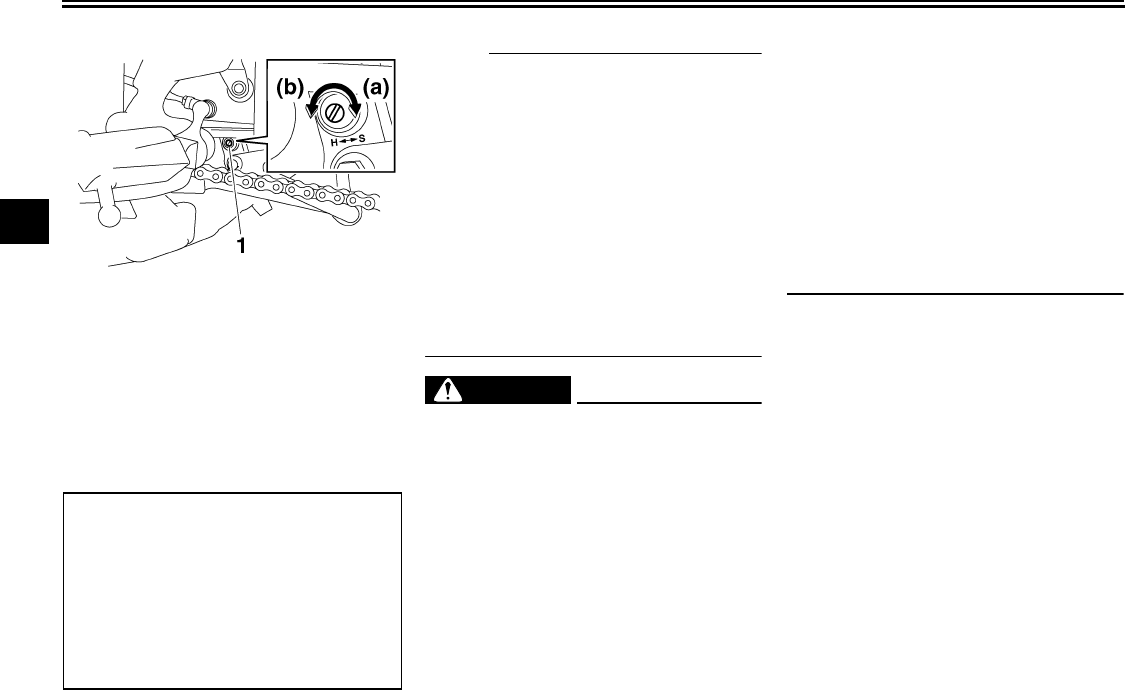
INSTRUMENT AND CONTROL FUNCTIONS
3-17
3
Rebound damping force
To increase the rebound damping force
and thereby harden the rebound damp-
ing, turn the adjusting screw in direction
(a). To decrease the rebound damping
force and thereby soften the rebound
damping, turn the adjusting screw in di-
rection (b).
NOTE:
Although the total number of clicks of
the rebound damping force adjusting
mechanism may not exactly match the
above specifications due to small differ-
ences in production, the actual number
of clicks always represents the entire
adjusting range. To obtain a precise ad-
justment, it would be advisable to check
the number of clicks of the rebound
damping force adjusting mechanism
and to modify the specifications as nec-
essary.
WARNING
EWA10220
This shock absorber contains highly
pressurized nitrogen gas. For prop-
er handling, read and understand
the following information before
handling the shock absorber. The
manufacturer cannot be held re-
sponsible for property damage or
personal injury that may result from
improper handling.
● Do not tamper with or attempt to
open the gas cylinder.
● Do not subject the shock ab-
sorber to an open flame or other
high heat sources, otherwise it
may explode due to excessive
gas pressure.
● Do not deform or damage the
gas cylinder in any way, as this
will result in poor damping per-
formance.
● Always have a Yamaha dealer
service the shock absorber.
1. Rebound damping force adjusting screw
Rebound damping setting:
Minimum (soft):
12 click(s) in direction (b)*
Standard:
6 click(s) in direction (b)*
Maximum (hard):
1 click(s) in direction (b)*
* With the adjusting screw fully turned
in direction (a)
U3C310E0.book Page 17 Wednesday, December 7, 2005 2:31 PM


















